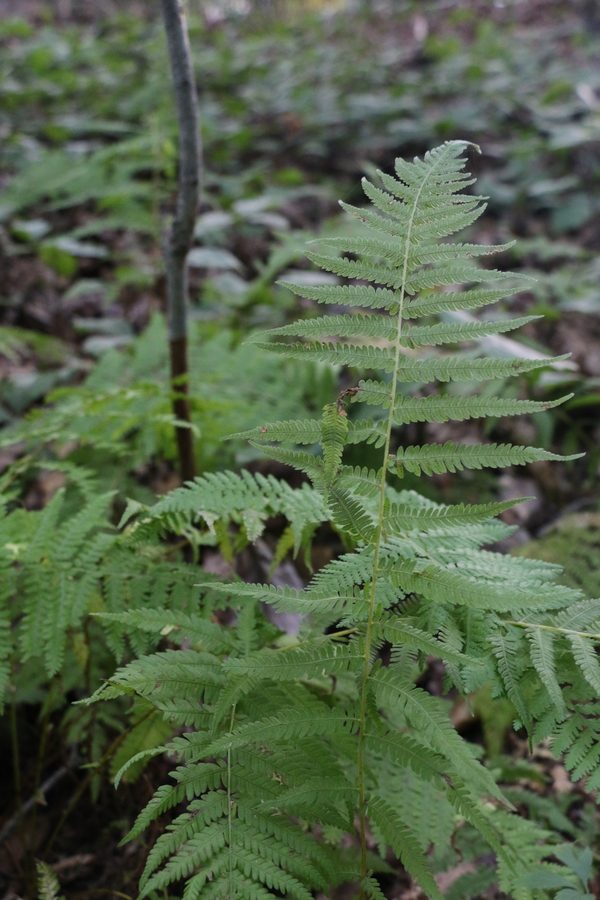Insights from Nature: Fern
Clusters of ferns grow throughout my neighborhood forest.
August 22, 2016
Scientific Name: Dennstaedtia punctilobula
Also called: Hay-scented fern, Eastern hay-scented fern
Height: 12-18 inches
“A type of bracken fern with pale green, downy fronds. Very robust grower. Fronds have the scent of freshly cut hay when cut. Fast growing.*”
Yes, I know. I mentioned I would blog about trees and, well, ferns are definitely not trees. Nevertheless, the more I researched ferns, the more I felt compelled to write about them — ferns are truly fascinating, fascinating plants. (And, through deeper thinking, they can teach us about life.)
First, picture their physical beauty. Fronds fluttering, stems swaying, ferns are mesmerizingly elegant as they dance in the wind. When fern stalks unfurl it is like a spool of thread that is rolling out upward, defying gravity.
If plants were celebrities, ferns would be Kate Middleton. Both hold themselves in a delicate manner: a fern’s balanced structure is to poised Kate Middleton. If plants corresponded to a fashion trend, ferns would equal Victorian dresses. When I say “Victorian dresses”, I don’t mean the attire of typical Victorian woman (who generally suffered from gender inequality due to their shamefully low social status), but rather the gowns that only royalty and the very wealthy could afford. The Victorian style — tightly-laced Victorian corsets, layers of petticoats, and intricate embroidery — has a graceful air that is analogous in ferns. See if any of these qualities appeal to you.
Speaking of the Victorian Era, the Victorians were obsessed with ferns. They collected them and heavily used them as decoration, coining the term “pteridomania” meaning “fern-fever”. During this time, botanists published their fern findings in periodicals and more ferns were discovered in western Britain.
Pteridomania resulted in a high demand of fern impressions on pottery, glass, metals, textiles, and even sculptures. In addition, ferns were also preserved after being pressed and dried, or dyed for nature prints on paper and cloth. Growing ferns indoors became a trend of the era. This lead to the creation of the Wardian case, a cabinet for growing the species in a less polluted environment with suitable humidity.
Did you know that ferns even have culinary uses? Martha Stewart’s fiddlehead fern and potato hash is a simple yet nutritious recipe that involves minimal cooking. Other creative dishes include fiddlehead soup as well as fiddlehead and gruyere tart.
The Victorian fern craze and ferns’ surprising potential in cooking are quite unrelated, but that’s exactly the point I want to make:
Expand your horizons and explore a wide range of areas, whatever that may mean for you. Teenagers, especially, push themselves toward one favorite subject, one career option, one dream college. Realize that there are a plethora of options available for you throughout life, so don’t limit yourself to the typical. Sometimes it’s good to pick the outrageous choice.
In the life cycle of flowering plants (not ferns), the gametophyte is dependent on the sporophyte for nutrition. But in ferns, the two phases are completely independent. The takeaway?
As we grow and gain more and more independence as high school students, continue to make decisions that you will always be proud of. Independence is powerful, but it may also be dangerous if exploited or misused. Independence allows you to be the one exclusively in charge of your own actions. It means that you are the sole director of the show that is your life.
*information here from Heart of Virginia Master Gardeners Association






